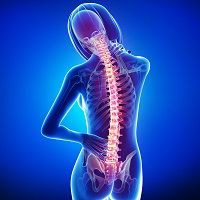Gene Mutation Associated with Rare Disease Key to Pain Processing
Canada- and Switzerland-based researchers discovered that a specific gene, that is typically associated with a rare disease, plays an important role in how pain is processed in the body.

Canada- and Switzerland-based researchers discovered that a specific gene, that is typically associated with a rare disease, plays an important role in how pain is processed in the body.
Pain response pathways have yet to be fully understood, however, lead author Artur Kania, PhD, of IRCM of the University of Montreal, and his colleagues shed light with a new study. The team evaluated the intersection of Lmx1b and brain-sparing driver, Hoxb8, in relation to nociceptive circuits. Published in The Journal of Neuroscience, the research evaluated mechanical and thermal stimuli and is the first to analyze Lmx1b specifically in the spinal cord.
“By studying mouse models, we first showed this gene is essential for the survival of neurons and the development of the spinal cord,” Kania, director of the Neural Circuit Development research unit, explained in a news release. “We then uncovered that removing the gene only in the spinal cord allows the mice to survive.”
Mutations in the gene Lmx1b result in Nail-patella syndrome (NPS), a rare human disease that causes limb and kidney malformations. In addition to the condition, the gene can affect the way the body processes pain. NPS patients are less sensitive to pain and do not feel cold heat, and pinch, for example, in the same way. Therefore, the researchers worked to find the exact role Lmx1b plays in pain responses.
They found that when the gene is absent it causes missing neurons. When that happens, it throws off the entire nervous system and disrupts transmitting information between the spinal cord and brain, including pain messages.
“Seeing as little is currently known about the pain pathways in the nervous system, this breakthrough will help advance our understanding of pain sensation,” Kania said. “Our work also provides invaluable knowledge for the study of chronic pain and other pain conditions.”
The connection interference discovery serves as a stepping stone for future research for successfully controlling pain.
“Together, our results demonstrate an important role for the intersection of Lmx1b and Hoxb8 expression in the development of nociceptive dorsal horn circuits critical for mechanical and thermal pain processing,” the authors concluded.